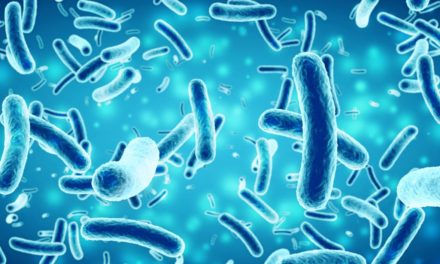The sun is dangerous—its rays can give you melanoma and kill you. Beware of the sun! Don’t go out on a summer’s day without wearing either SPF 97 sun block or a lead-lined flannel shirt. Yep, the sun is right up there with trans-fats, cigarettes, and unprotected sex as a threat to our health; or so we are told.
What is dangerous is getting a sun burn and “excessive” exposure to the sun. Being out in the sun is not necessarily unhealthy. The sun is, after all, necessary for vitamin D metabolism. The band of radiation between 290 and 315 nm is necessary for the conversion of provitamin D3 to previtamin D3. Eventually the previtamin D3 is thermally converted in the skin. A sun block rated as low as SPF 8 can stop this process. The vitamin D is inherently inactive, and is converted by hydroxylation in the liver and kidney to its active form, 1, 25-dihydroxyvitamin D.
By limiting our exposure to the sun, we may be creating other health problems by creating a vitamin D deficiency. Let’s take cancer for instance, one study, in the July-August, 2006 issue of Anticancer Research, makes the suggestion that sunlight and the production vitamin D may reduce the risk of several cancers. There are other studies that indicate that vitamin D may protect us from cancer.
The fact that we have a flu season may be related to vitamin D deficiency, according to research appearing in the British journal, Epidemiology and Infection (2006 Dec; 134(6):1129-40). The article cites R. Edgar Hope-Simpson, who noticed the seasonality of influenza epidemics, and the possible relation to solar radiation.
The researchers propose that the seasonal connection between vitamin D and the flu may be vitamin D. Flu season is during the winter, and vitamin D deficiency is common in the winter—due to the lack of solar radiation. Solar radiation triggers vitamin D production in the skin. Ultra violet radiation (found in sunlight) reduces the incidence of viral infections. Cod liver oil, a source of vitamin D, reduces the incidence of viral infections. Treating children with vitamin D reduced the incidence of respiratory infections.
Activated vitamin D is a steroid hormone that has an effect on immunity. It reduces inflammatory chemicals (cytokines) and increases the effectiveness of certain white blood cells. It stimulates potent anti microbial peptides found in white blood cells and in the cells lining the respiratory tract.
According to the Mayo Clinic Proceedings (December 9, 2003), vitamin D deficiency is one possible cause of persistent and vague musculoskeltal pain. A study of 150 children and adults suffering from vague musculoskeletal pain performed at the University of Minnesota found that 93% of the subjects were vitamin D deficient. Of the subjects involved with the study, all of the African, African-American, Hispanic and Native Americans were vitamin D deficient, as well as all of the subjects under the age of 30. These are people who have ancestors who lived in areas where there is a lot of exposure to the sun. Dark skinned people living in Northern latitudes tend to be deficient in vitamin D. Consider this when dealing with chronic pain that seems to resist other treatment. The worst vitamin D deficiencies were found in women of child-bearing age.
According to the Nov. 12, 2003 edition of the Pain Management issue of the Journal of the American Medical Association, the cost of treating pain unsuccessfully is $61.2 billion per year. This study shows that there may be, at least in some patients, a very simple answer for this common problem.
Vitamin D deficiency is associated with a risk for osteoporosis, diabetes, high blood pressure, cancer, and auto-immune diseases such as multiple sclerosis. Inadequate vitamin D is also harmful for developing fetuses and is the cause rickets of in children.
In separate study, conducted in Saudi Arabia, a vitamin D deficiency was found in a group of chronic back patients. All the patients were given cholecalciferol for three months, which improved the chronic pain. The subjects were given doses that are considered toxic (5,000 to 10,000 IU, which is between two and three times the toxic dose). After receiving the cholecalciferol , all the patients had normal levels.
Research appearing in the Archives of Internal Medicine (2005;165:1246-1252), suggests that there may be a connection between low levels of vitamin D and calcium, and PMS. Earlier studies have shown that the blood levels of vitamin D and calcium were lower in women with PMS than in women without PMS. This study surveyed the dietary intake of over 3000 women between the ages of 27 and 44. All women were free of PMS at the start of the study in 1991. During the course of the study, over 1000 of the women remained free of PMS and more than 1900 of the women developed PMS. Intake of vitamin D and calcium was determined by food frequency questionnaires given in 1991, 1995 and in 1999. Higher intake of vitamin D and calcium was associated with a lower incidence of PMS.
According to research printed in the Journal of Clinical Nutrition, (2000;130:2648-2652) vitamin D deficiency may be a factor in inflammatory bowel disease (IBD). Researchers tested this idea in mice known as interleukin (IL)-10 knockout (KO) mice (bred to have a tendency for IBD). The mice were divided into three groups. One group was kept vitamin D deficient. One group was given adequate vitamin D. The third group was supplemented with vitamin D.
The vitamin D deficient mice rapidly developed diarrhea and a wasting disease, and died. The mice with adequate vitamin D did not suffer from diarrhea and wasting. Supplementation with vitamin D (1,25-dihydroxycholecalciferol) for as little as two weeks actually blocked the symptoms and gave relief to mice that already had IBD.
According to research appearing in the American Journal Clinical Nutrition, there may be a connection between vitamin D deficiency and diabetes. The study involved 126 glucose tolerant Californians. Insulin sensitivity index (ISI) and first- andsecond-phase insulin responses (1stIR and 2ndIR) were assessedby using a hyperglycemic clamp. The authors concluded that there was a positive correlation of vitamin D concentration with insulin sensitivity. There was a negative effectof low vitamin D levels on pancreatic ß cell function. Subjectswith inadequate vitamin D are at higher risk of insulin resistanceand the metabolic syndrome. Further studies are required toexplore the underlying mechanisms.
Researchers at Penn State and Helen Hayes Hospital in New York conducted a small study that has shown that a daily dose of 1000 IU of vitamin causes changes in blood chemistry that indicate positive effects for multiple sclerosis patients. Also, in the Jan. 13, 2004 issue of Neurology an analysis of data from the Nurse’s Health Study indicates that vitamin D may have a protective effect against multiple sclerosis (MS). Women without MS symptoms completed questionnaires on diet and use of multivitamin supplements. A dose of 400 IU or more of vitamin D per day reduced the likelihood of developing MS by 40% when compared to subjects who used no supplements. The study involved 187,563 women, 173 women developed MS during the study. Earlier studies on mice have supported this idea that vitamin D may be a deterrent to MS. Some researchers have linked low vitamin D levels to MS. MS exists mostly in Northern latitudes where there is less sunlight (hence less vitamin D).
It is still popular for doctors to warn about the evils of the sun, but more researchers are now becoming just as concerned about vitamin D deficiency. Avoiding the sun definitely reduces vitamin D. As always, good health involves balance.






